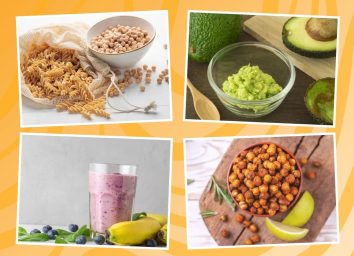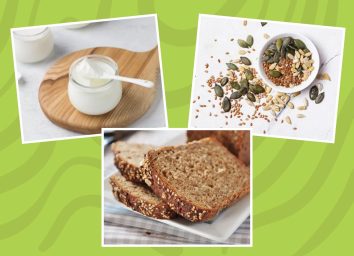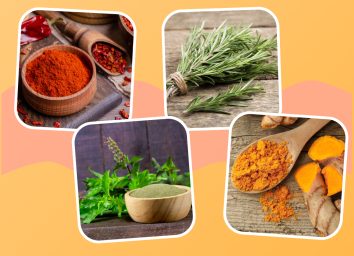What Happens To Your Body When You Eat Romaine Lettuce
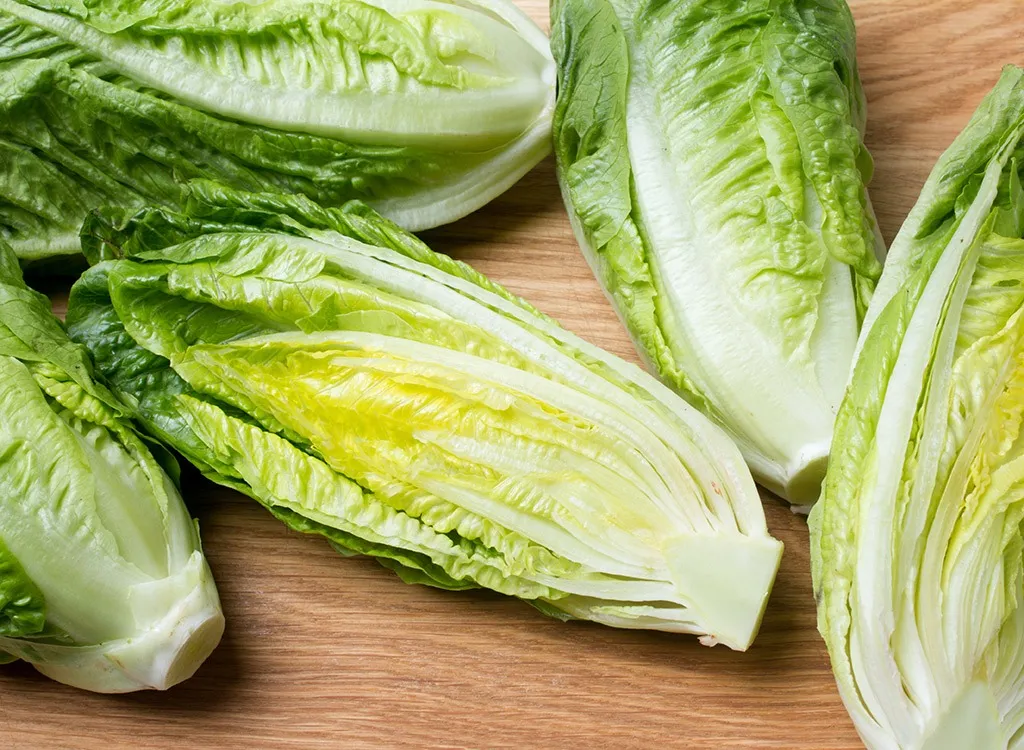
Romaine lettuce just doesn't get the praise it deserves—particularly when compared to its dark leafy cousins, kale and spinach. But here's the thing: Experts say this underrated veggie is actually loaded with important vitamins and minerals. In fact, romaine ranked even higher than kale, collard greens, and arugula thanks to its impressive nutritional profile. So if you love to eat romaine lettuce on the regular, than you're in luck.
"Romaine lettuce can be a wonderfully healthy addition to a balanced diet," says Kylie Ivanir, RD. "This sturdy lettuce is packed with nutrients and can be added to salads, sandwiches, and smoothies. Plus, it's a low-calorie food that naturally contains high levels of fiber, varying vitamins and minerals, carotenoids, and phenolic compounds that are important for overall health."
In fact, according to Ivanir, romaine has one important advantage. Unlike spinach and kale, it's much lower in a compound called oxalate, which can be problematic for those with compromised gut health and also prevent the absorption of certain minerals (like calcium). Plus, Brad Dieter, a NASM-certified nutrition coach and research scientist, adds that romaine can be easier on your GI tract since it's slightly less fibrous and higher in water.
Whether you love tossing the hearts into a Caesar salad, using the leaves as lettuce wraps, or charring up a whole head on the grill, here are some things you should know about what happens to your body when you eat romaine lettuce. And for even more healthy tips, be sure to check out our list of The 7 Healthiest Foods to Eat Right Now.
Your bowel movements will be regular.
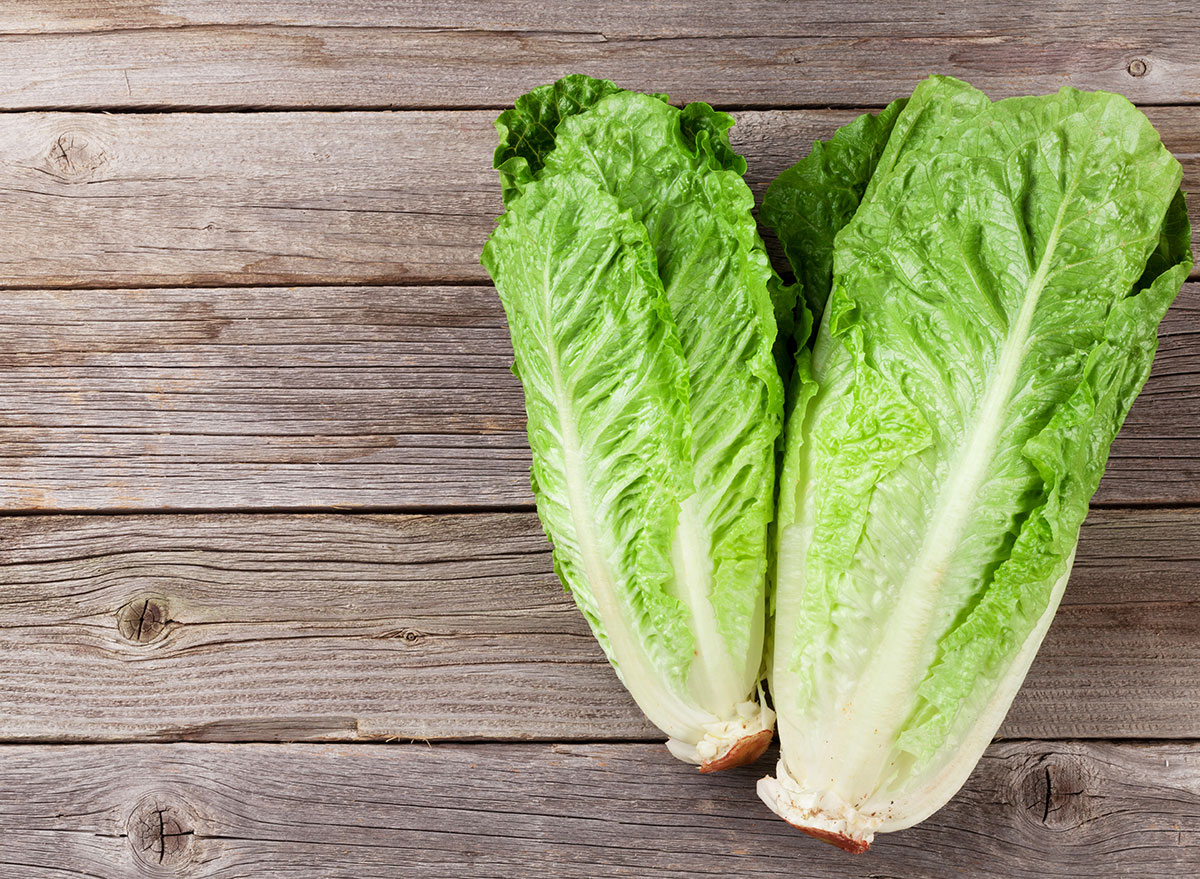
You're highly unlikely to deal with constipation after you eat romaine lettuce. That's because as Kelsey Lorencz, RDN from Graciously Nourished, points out, romaine is relatively high in fiber.
"Most of this fiber is insoluble fiber, which helps add bulk to stool and keeps things moving more regularly," she says.
Fun fact: Alicia Galvin, an RD and resident dietitian to Sovereign Laboratories, notes that the fiber in romaine also has heart-healthy effects.
"In the colon, fiber binds to bile salts and removes them from the body," she says. "This forces the body to make more bile, which is helpful because it must break down cholesterol to do so."
Here are 9 Warning Signs You're Not Eating Enough Fiber.
Your body is primed for weight loss.
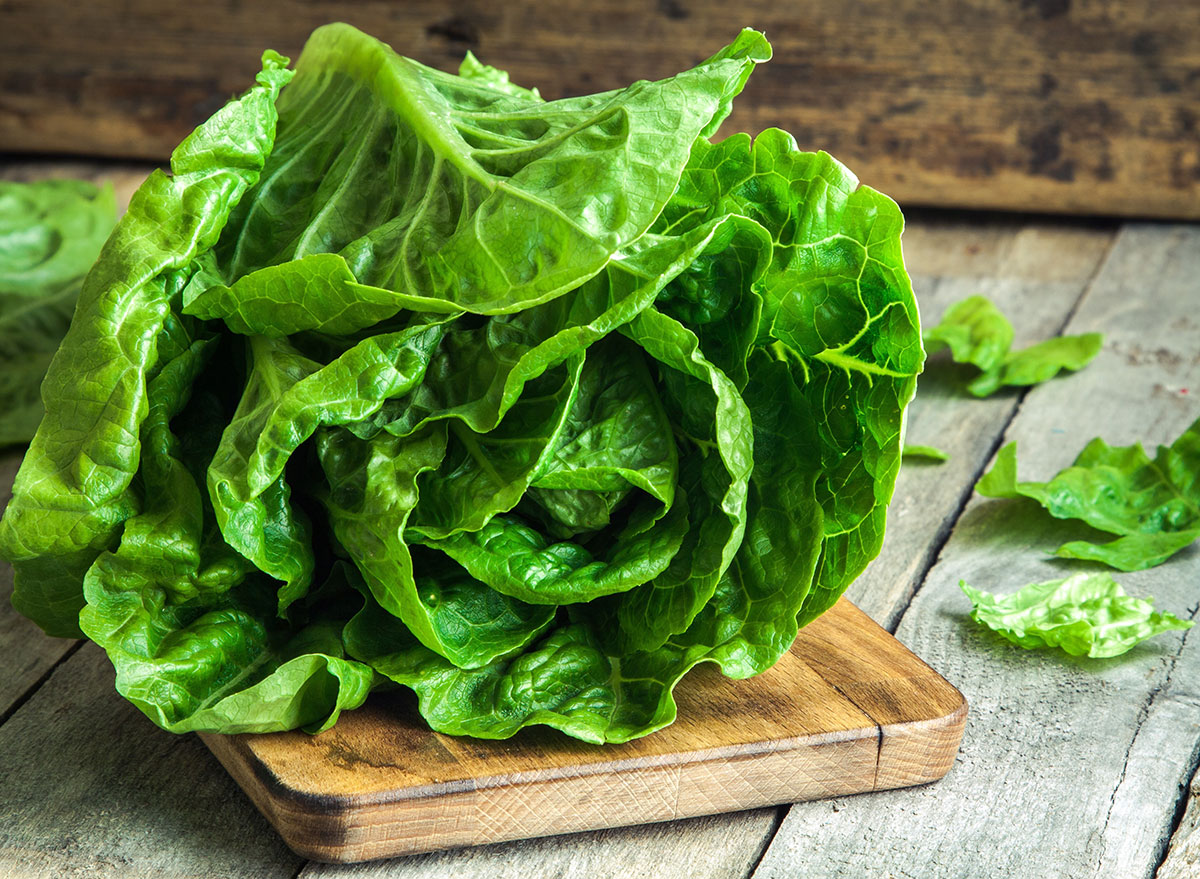
Romaine lettuce is basically a dieter's dream: A 1-cup serving only has 15 calories and 2.8 grams of carbs, but 1.8 grams of satiating fiber.
"As a dietitian, I regularly include lettuce at my lunch meal to add bulk without adding a lot of calories," says Mary Wirtz, an RD and nutritional consultant at Mom Loves Best. "It keeps me more full and less apt to crave other high-calorie foods."
Trista Best, an RD at Balance One Supplements, adds that since romaine takes up a lot of space in your stomach, it can activate your "stretch receptors"—and when this happens, you end up feeling satisfied based on the density of the food rather than the caloric content.
Get even more weight loss tips straight to your inbox by signing up for our newsletter!
You may get an immune boost.
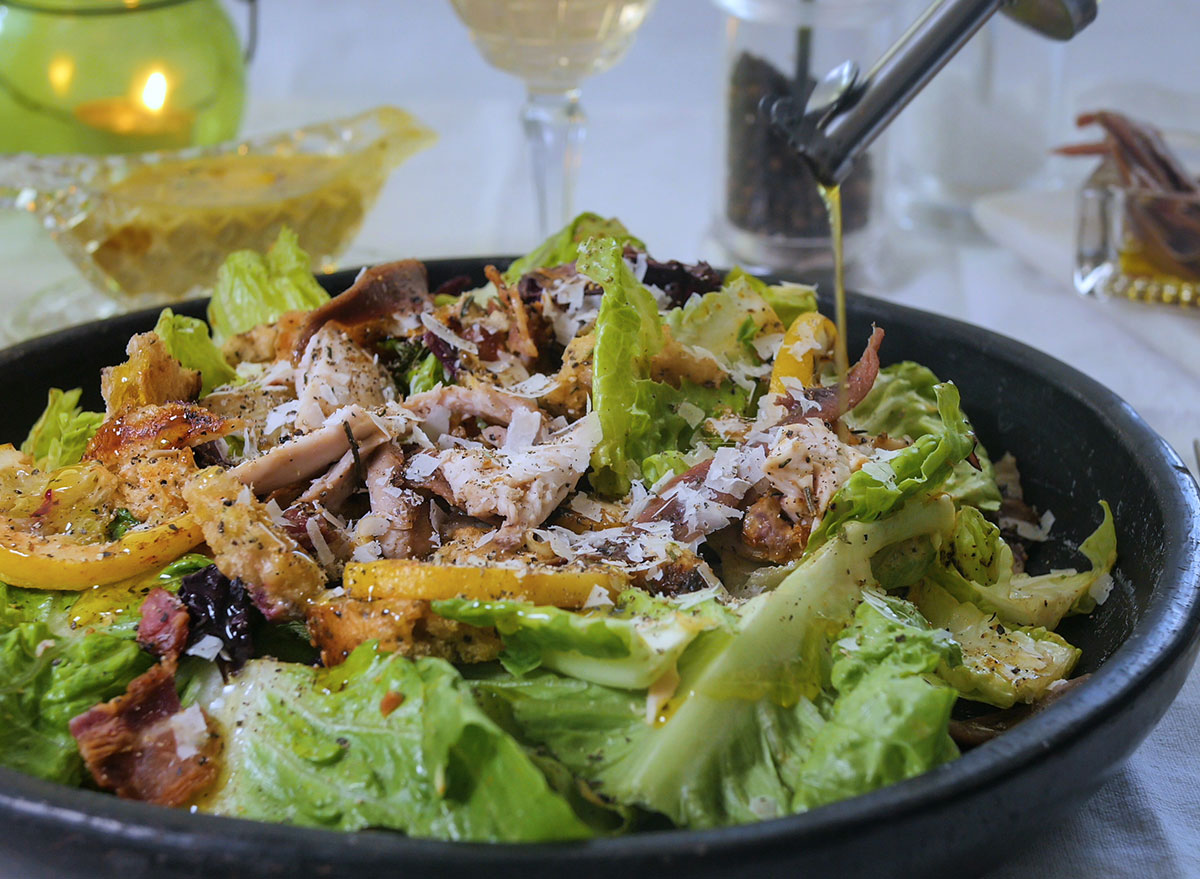
If you're looking to ward off that seasonal cold, you'll definitely want to eat romaine lettuce regularly. This leafy vegetable packs a ton of valuable vitamins and minerals that can keep you from getting sick. For example, just 1 cup contains about 11.3 milligrams of vitamin C or 19% of your daily value—which is noteworthy given the crucial role this vitamin plays in your immune system.
"Vitamin C is an essential immune-boosting nutrient, keeping your skin strong to keep out pathogens as well as increasing the effectiveness of immune cells in the body as they work to kill microbes that intend to make us sick," explains Lorencz.
According to Ivanir, vitamin C is also involved in wound healing and is essential for the growth and repair of body tissues, the formation of collagen, and absorption of iron. Here are The Best Vitamin C Rich Foods for Weight Loss.
Your heart will be happy.
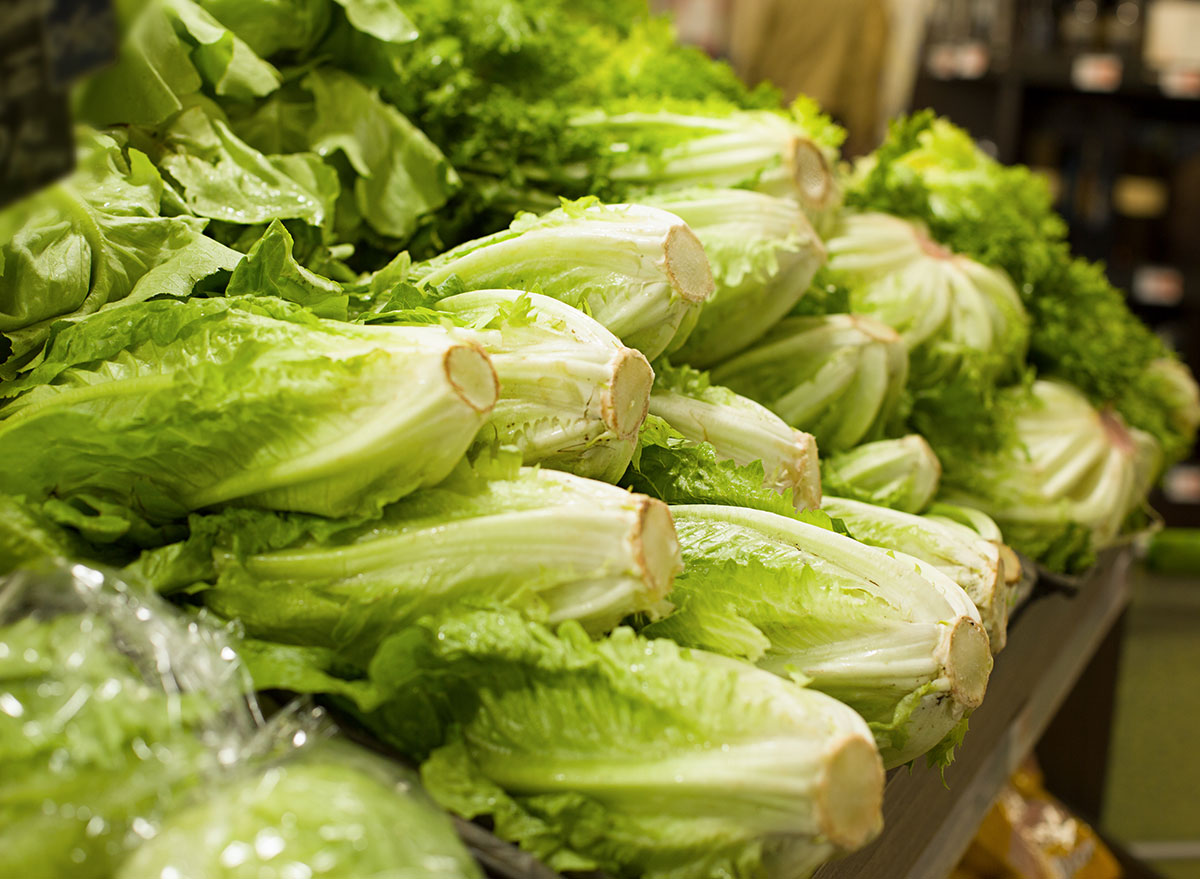
Loading up on romaine can do wonders for your ticker, according to Galvin. When cholesterol becomes oxidized, it starts to build up in the artery walls forming plaque—but fortunately, the vitamin C and beta-carotene in romaine lettuce work together to prevent the oxidation of cholesterol.
Additionally, Galvin notes that the folate in romaine can help to lower levels of a damaging chemical called homocysteine in your body.
"If not converted, homocysteine can directly damage blood vessels, thus greatly increasing the risk of heart attack and stroke," she explains.
Lastly, romaine is an excellent source of potassium, which Wirtz says is linked to decreased risk of high blood pressure and stroke.
You'll get closer to your hydration needs.
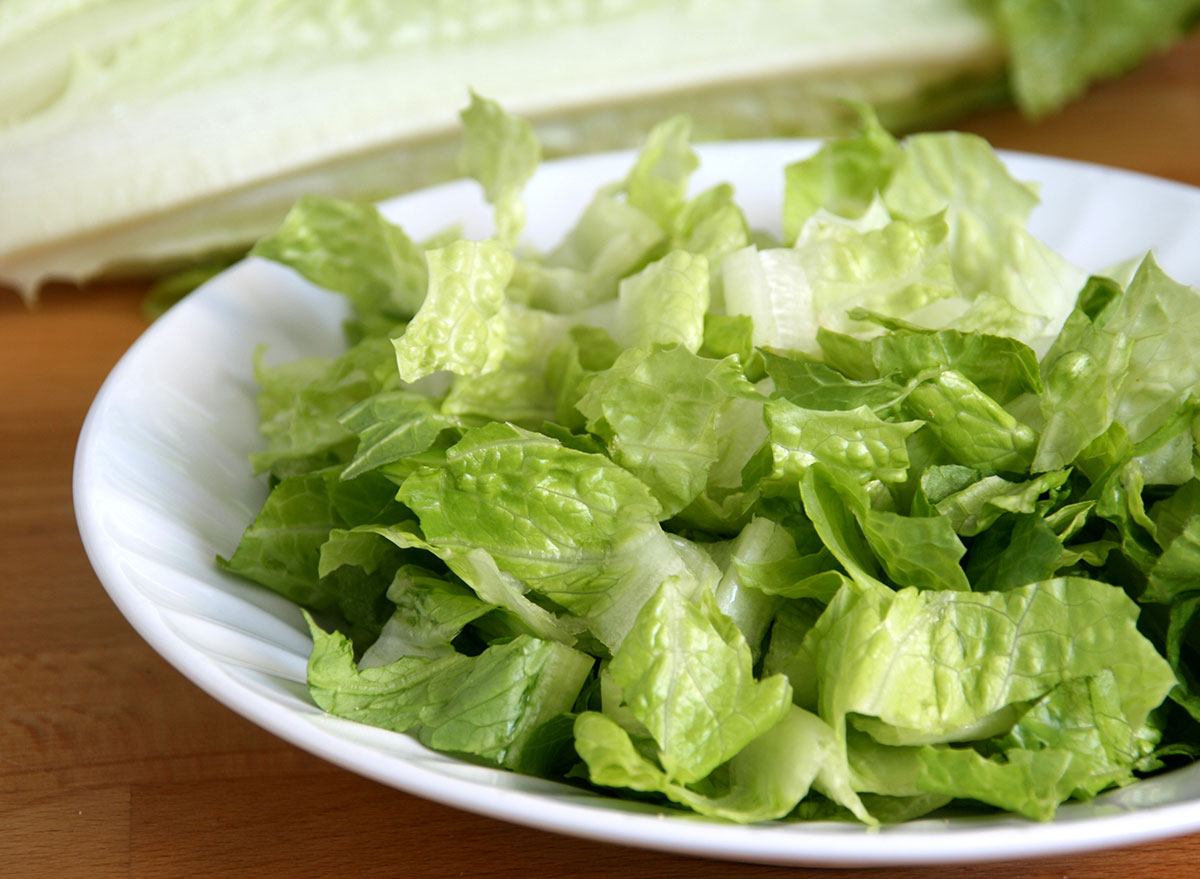
Drinking water isn't the only way to hydrate your body—you can also get plenty of water through certain foods, including romaine lettuce. In fact, romaine lettuce is almost 95% water. According to Dieter, a 2-cup serving of romaine is equivalent to drinking half a glass of water.
Looking to up your water intake even further? Top that romaine salad with some other hydrating vegetables, like cucumber, carrots, radishes, and tomatoes.
Staying hydrated has a number of health rewards. Not only does it help to prevent infections, keep your organs functioning properly, and keep your joints lubricated, but it can also help to improve your mood and sleep quality.
Your eyes will thank you.
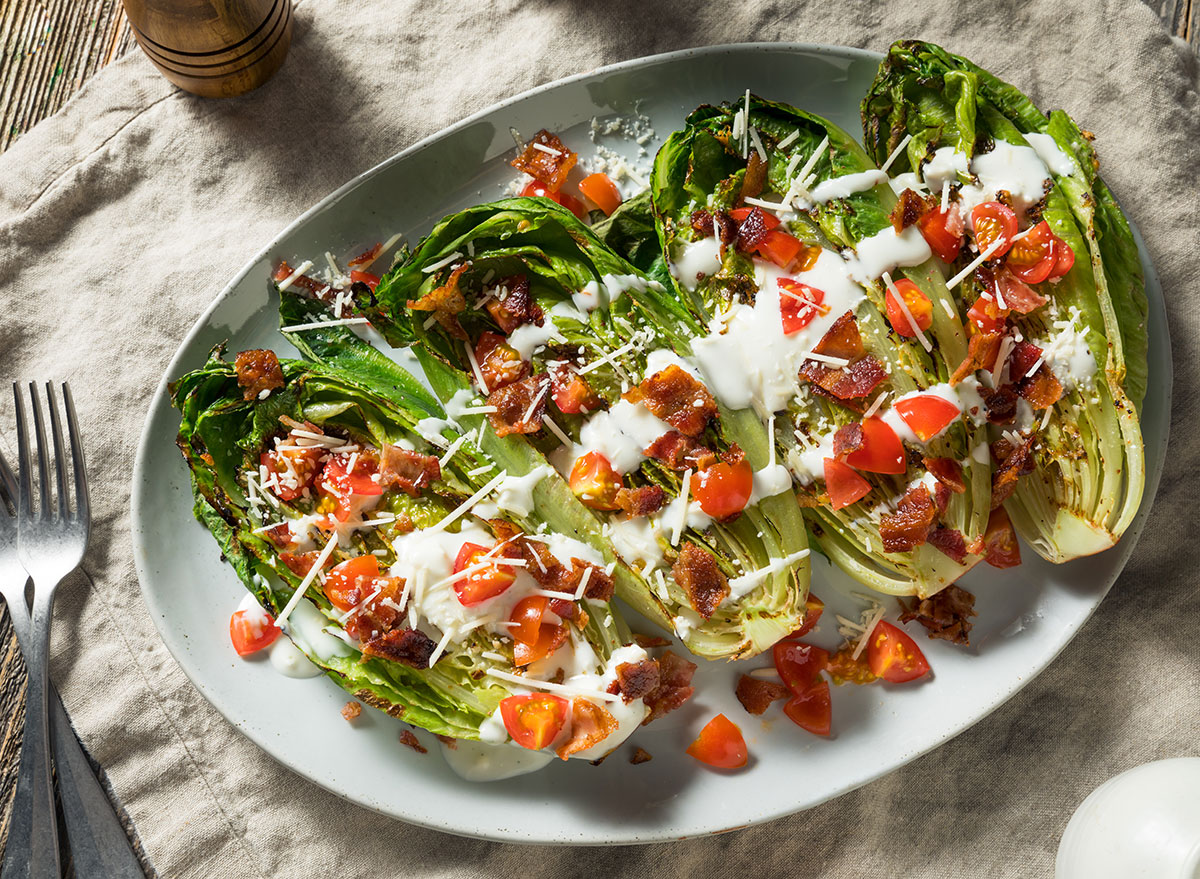
While kale may offer more vitamin C, Dieter says that romaine actually has twice the amount of vitamin A. 1 cup contains approximately 80% of your daily recommended value for this particular nutrient.
"Vitamin A is incredibly important for vision and ensuring we maintain an adequate intake of Vitamin A can help reduce the risk of age-related declines in vision and eye diseases," he says.
Jay Cowin, registered nutritionist and director of formulations at ASYSTEM, adds that eating a diet rich in Vitamin A can help prevent eye conditions such as cataracts and vision loss.
By the way, according to the American Optometric Association, higher intakes of vitamin C is associated with a lower risk of cataracts.
Your bones will benefit.
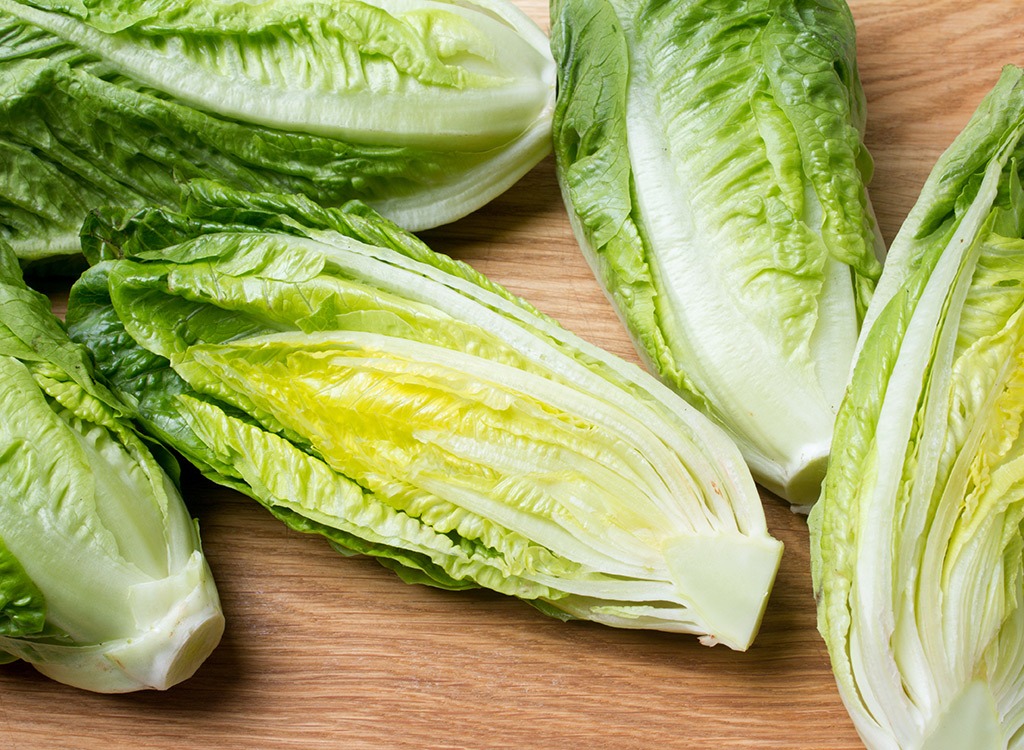
"Romaine contains various nutrients that are important for health, such as calcium and vitamin K," says Ivanir. "Calcium and vitamin K are critical for maintaining strong, healthy bones, preventing bone mineral loss and potential fractures."
Research has shown that vitamin K can not only increase bone mineral density in osteoporotic people but also reduce fracture rates. There's also evidence that even low doses of vitamin K can improve bone density when it's ingested alongside vitamin D.
Luckily, just 1 cup of romaine has 53% of your RDA for vitamin K. If you want to fully reap the bone health benefits of vitamin K, you might combine your romaine lettuce with another food rich in vitamin D, such as sockeye salmon, eggs, cooked shiitake mushrooms, or canned white albacore tuna.

